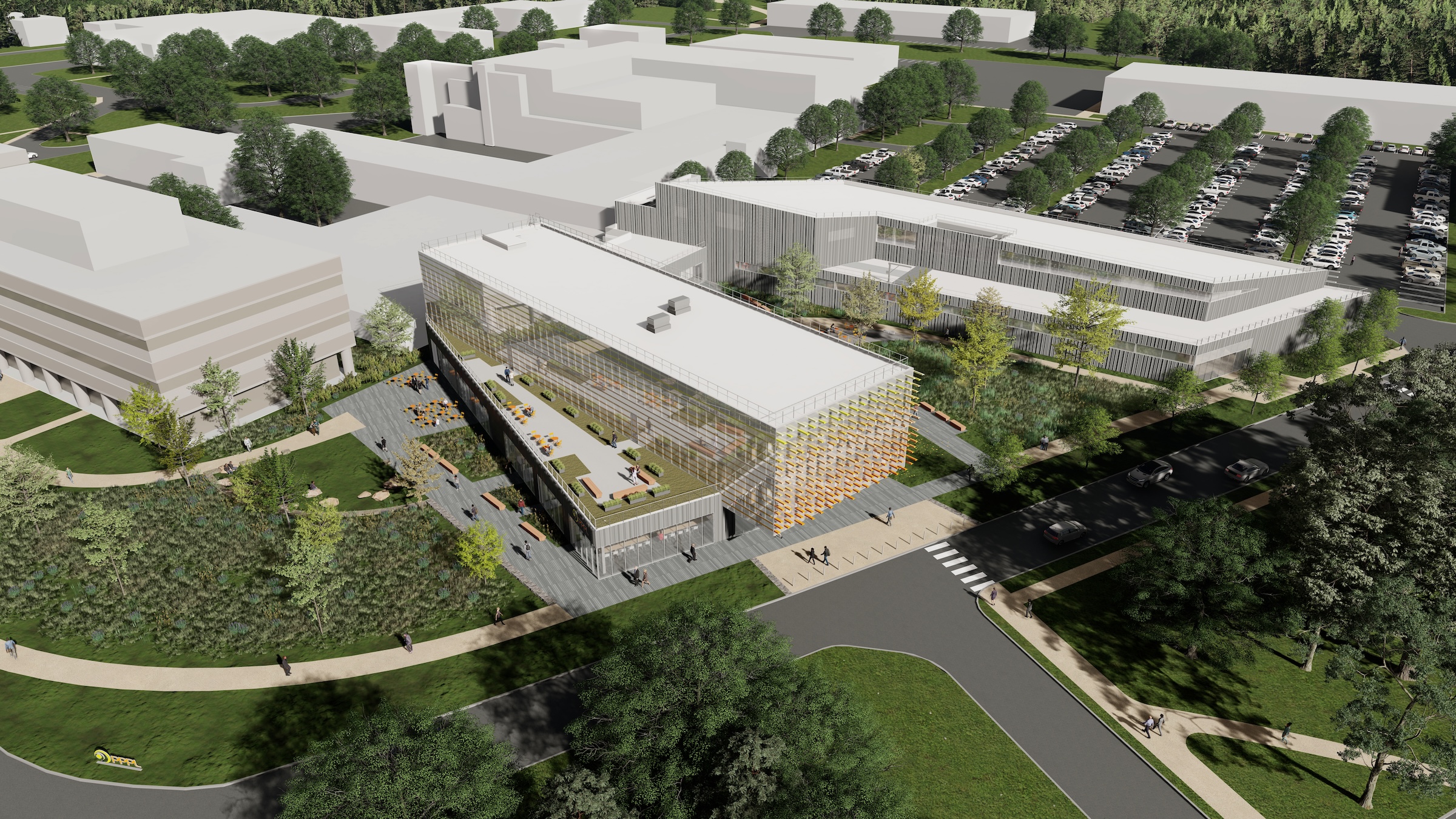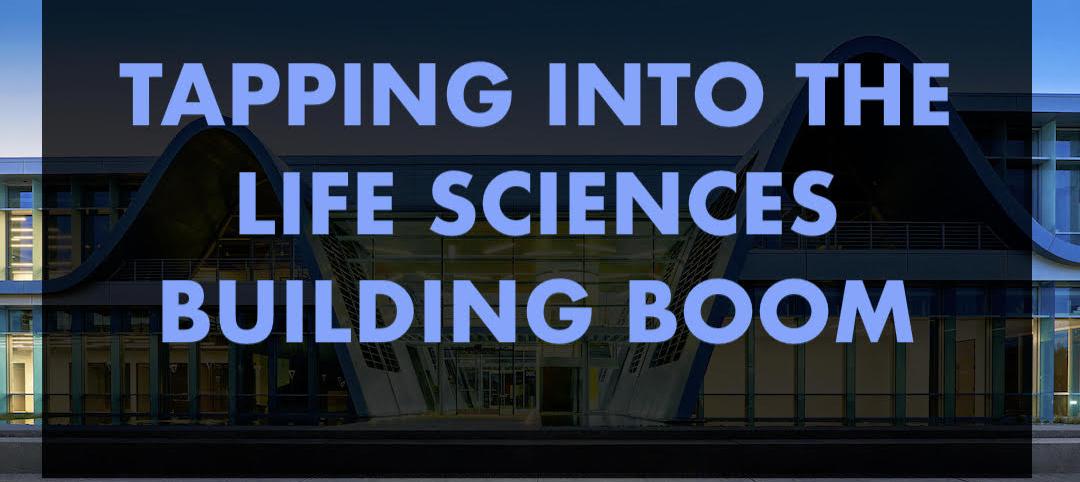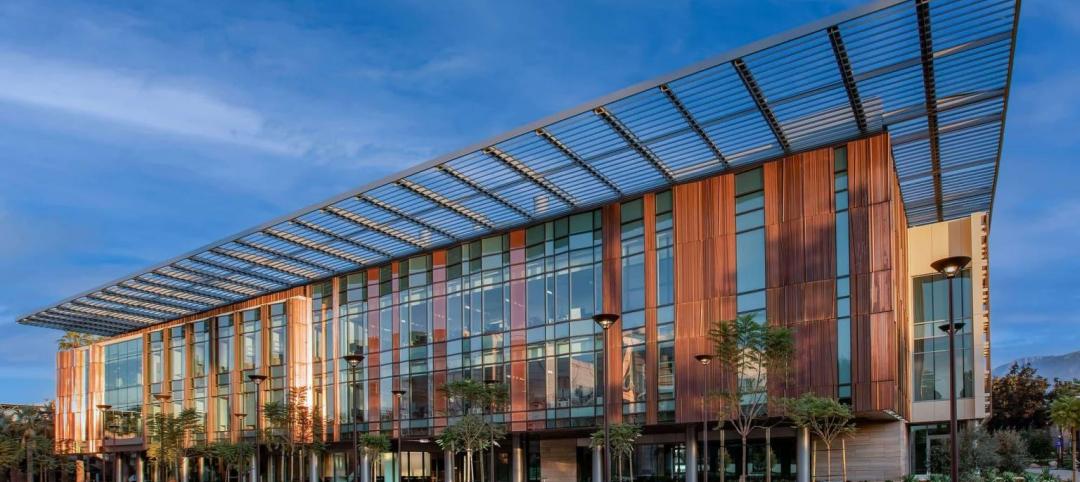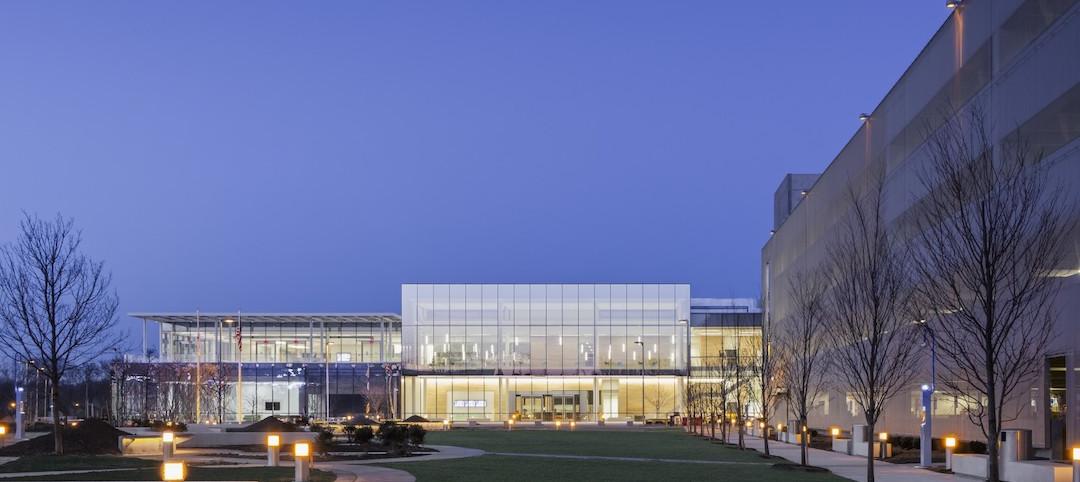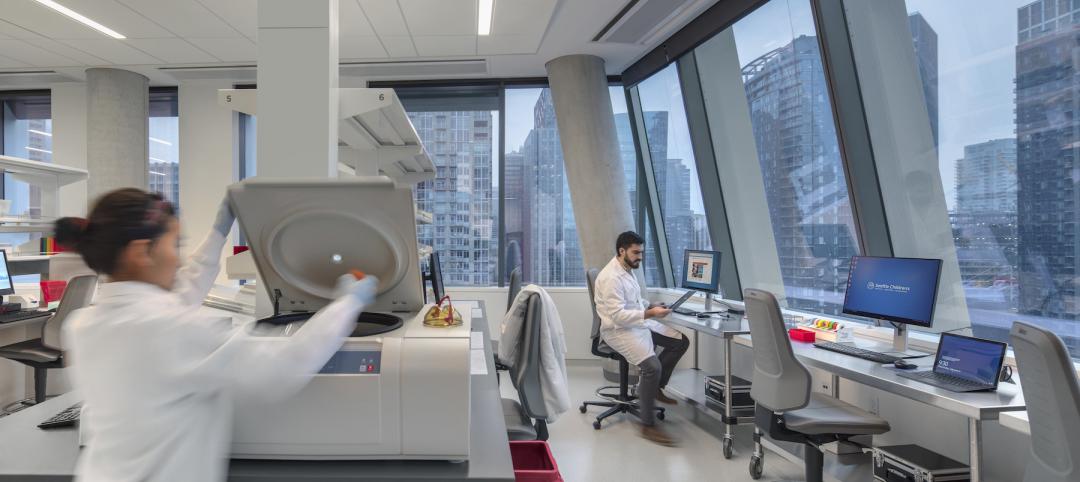In Princeton, N.J., the U.S. Department of Energy’s Princeton Plasma Physics Laboratory (PPPL) has broken ground on the Princeton Plasma Innovation Center (PPIC), a state-of-the-art office and laboratory building.
Designed and constructed by SmithGroup, the $109.7 million facility will provide space for research supporting PPPL’s expanded mission into microelectronics, quantum sensors and devices, and sustainability sciences. PPIC also will help the organization contribute research toward President Biden’s “Bold Decadal Vision for Commercial Fusion Energy.”
The first new building at PPPL in several decades, the 68,000-sf center will replace two buildings dating to the 1950s. The high-performance, sustainable building aims to be LEED Gold certified and a zero-carbon emissions building.
In addition to providing lab space, PPIC will have remote collaboration space and a virtual reality cube where PPPL scientists can communicate with research partners around the world. The building also will provide PPPL’s science education team a new lab for training the next generation of scientists.
In the U-shaped building, the north wing will feature a collaborative first floor where visitors enter, while the second and third floors will be dedicated mostly to office space for about 170 staff members. The laboratory wing to the south will have 10 medium-bay laboratories and 13 small-bay laboratories on the ground floor.
At the intersection of the north and south wings, the café will feature retractable walls on each side that open to the courtyard and the north garden, as will the science education lab and first-floor meeting rooms. A roof garden will sit north of the building entrance.
In line with the project’s focus on sustainability, glass will be used extensively to maximize daylight for the offices and reduce the use of electric lights. At the same time, colorful shades will reduce direct heat and glare from the sun by 88%, mitigating the need for air conditioning.
A geothermal exchange system, which will be dug 500 ft below ground between the north and south wings, will extract heat from the building in the summer and store it underground to heat the building in the winter. The system will provide about two-thirds of the building’s heating and cooling.
The project is primarily funded by the DOE’s Science Laboratories Infrastructure program, while Princeton University contributed $10 million for preconstruction work.
On the Building Team:
Owner: U.S. Department of Energy’s Princeton Plasma Physics Laboratory (PPPL)
Design architect, architect of record, and MEP and structural engineer: SmithGroup
Civil engineer: Van Note-Harvey Division of Pennoni
General contractor: INTECH Construction
Related Stories
Giants 400 | Dec 31, 2021
2021 Science and Technology Sector Giants: Top architecture, engineering, and construction firms in the U.S. S+T facilities sector
HDR, CRB, Jacobs, Skanska USA, and Whiting-Turner Contracting Co. top the rankings of the nation's largest science and technology (S+T) sector architecture, engineering, and construction firms, as reported in the 2021 Giants 400 Report.
Laboratories | Nov 18, 2021
Tapping into the life sciences building boom
Paul Ferro of Form4 Architecture discusses how developers are pivoting to the life sciences sector, and what that means for construction and adaptive reuse.
2021 Building Team Awards | Nov 17, 2021
Caltech's new neuroscience building unites scientists, engineers to master the human brain
The Tianqiao and Chrissy Chen Institute for Neuroscience at the California Institute of Technology in Pasadena wins a Gold Award in BD+C's 2021 Building Team Awards.
Laboratories | Nov 17, 2021
New report finds a biopharma industry being reshaped by disruption
Industry respondents to CRB’s survey weigh in on project delivery, digitization, and off-site manufacturing for life sciences construction.
Laboratories | Oct 14, 2021
‘Next-generation’ Quest Diagnostics lab unveiled in New Jersey
Mark Cavagnero Associates designed the project.
Laboratories | Aug 31, 2021
Pandemic puts science and technology facilities at center stage
Expanding demand for labs and life science space is spurring new construction and improvements in existing buildings.
Giants 400 | Aug 30, 2021
2021 Giants 400 Report: Ranking the largest architecture, engineering, and construction firms in the U.S.
The 2021 Giants 400 Report includes more than 130 rankings across 25 building sectors and specialty categories.
Laboratories | Aug 30, 2021
Science in the sky: Designing high-rise research labs
Recognizing the inherent socioeconomic and environmental benefits of high-density design, research corporations have boldly embraced high-rise research labs.
Laboratories | Aug 25, 2021
Lab design strategies for renovations and adaptive reuse
Lab design experts in HOK’s Science + Technology group outline the challenges organizations must understand before renovating a lab or converting an existing building into research space.
Architects | Aug 5, 2021
Lord Aeck Sargent's post-Katerra future, with LAS President Joe Greco
After three years under the ownership of Katerra, which closed its North American operations last May, the architecture firm Lord Aeck Sargent is re-establishing itself as an independent company, with an eye toward strengthening its eight practices and regional presence in the U.S.


